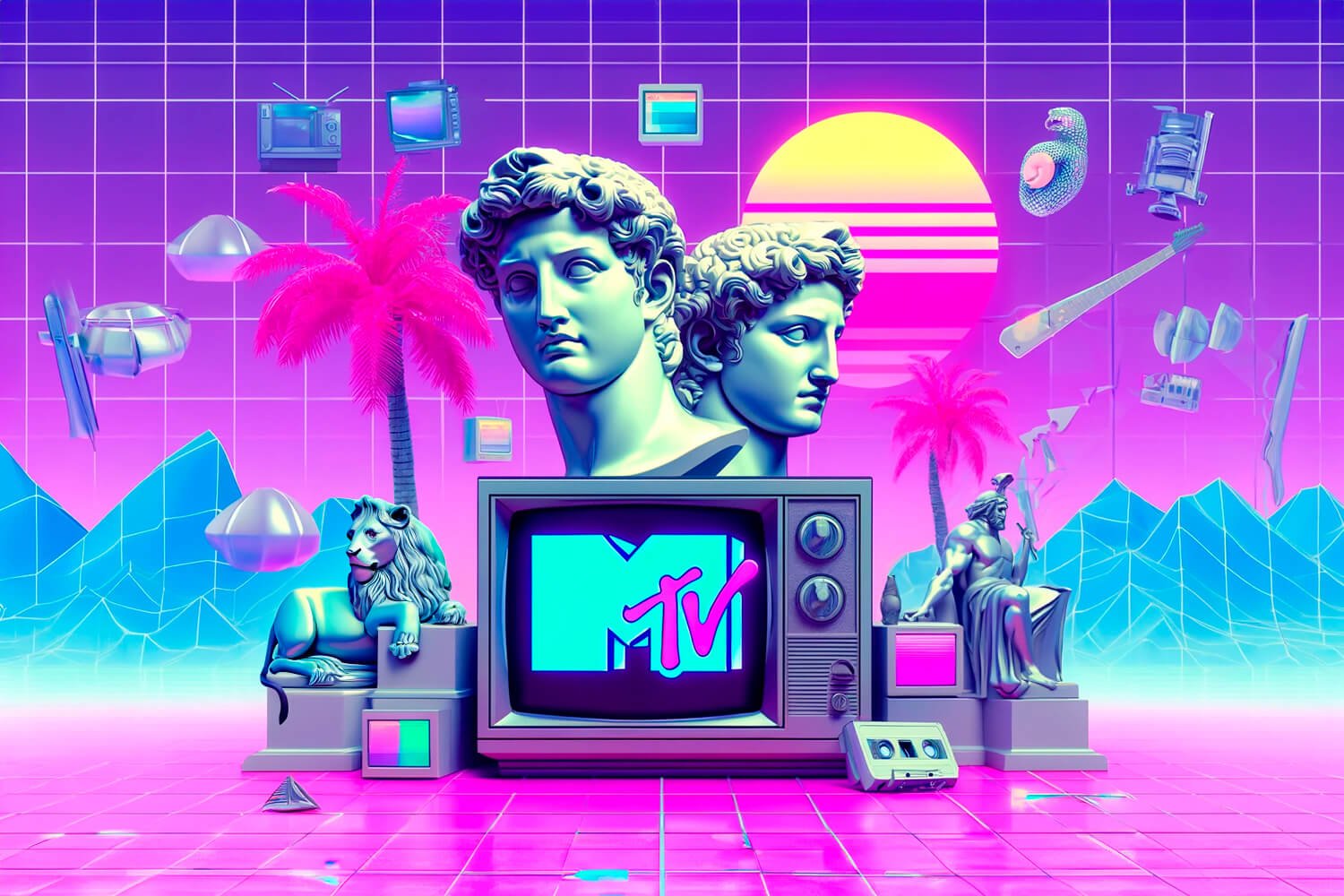Ah, the 1980s – a decade known for its neon colors, futuristic imagery, and iconic music videos.
MTV was at the forefront of this visual revolution, changing the way we experienced music.
We delve into what made MTV unique among other music channels, how its influence shaped pop culture, and how its legacy influenced the emergence of Vaporwave.
Join us as we explore the enduring legacy of MTV and its impact on Vaporwave visuals.
Key Takeaways:
- MTV revolutionized music television in the 1980s, blending music with visual storytelling and creating a cultural phenomenon.
- Vaporwave, a genre of electronic music, draws inspiration from MTV’s neon colors and futuristic imagery, using nostalgia to critique consumerism.
- The influence of MTV on Vaporwave is evident in the sampling and remixing of 80s and 90s pop culture, as well as the use of VHS and glitch effects.
The Rise of MTV in the 1980s
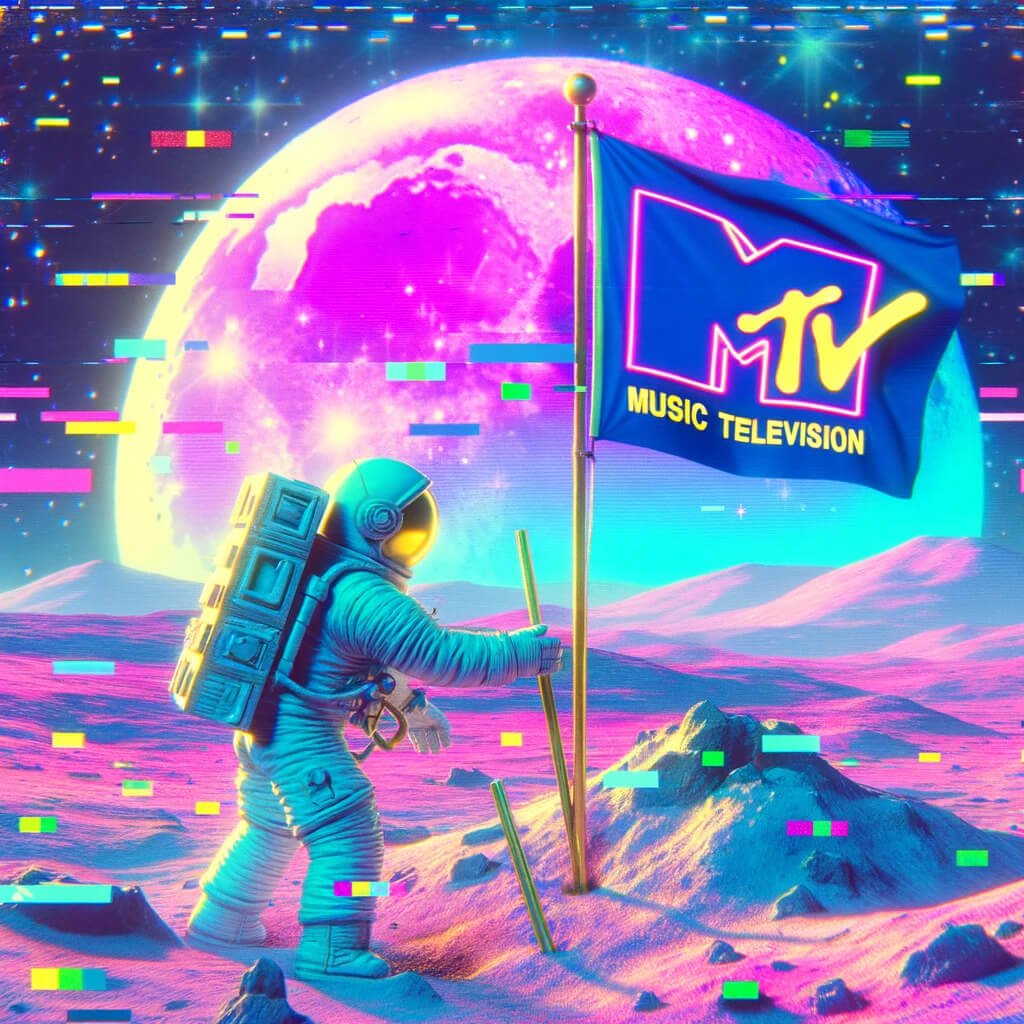
During the 1980s, MTV emerged as a groundbreaking force in the realm of Music Television, fundamentally altering the landscape of visual entertainment and cultural influence. Its impact on Generation X and the trajectory of Television History is undeniable.
MTV revolutionized the way music was consumed by introducing the concept of music videos as a central component of its programming. This shift not only brought musicians and their art closer to the audience but also gave rise to a new era of visual storytelling in the music industry. The channel not only became a platform for showcasing new talent but also propelled established artists to new heights of stardom.
MTV’s influence extended beyond music, playing a key role in shaping fashion trends, attitudes, and even the vernacular of the era. Its cultural impact was so profound that it became synonymous with the spirit of the 1980s itself, embodying the rebellious and innovative ethos of the generation.
What Made MTV Different from Other Music Channels?
MTV carved its niche by revolutionizing Music Television through innovative strategies such as quick cuts, striking visual storytelling, and unique advertising tactics that set it apart from traditional music channels.
One of the distinct features that differentiated MTV from other music channels was its use of quick cuts in music videos, creating a dynamic and fast-paced viewing experience that captivated audiences. MTV’s emphasis on visual storytelling techniques allowed them to convey powerful narratives through music videos, transcending the mere performance aspect often seen on traditional music channels.
MTV’s unique advertising tactics played a crucial role in its success, seamlessly integrating commercials and sponsor messages into its programming without disrupting the viewer’s experience. This approach not only attracted advertisers but also helped cultivate a loyal audience base that grew to associate certain brands with the MTV brand itself.
The Visual Aesthetics of MTV
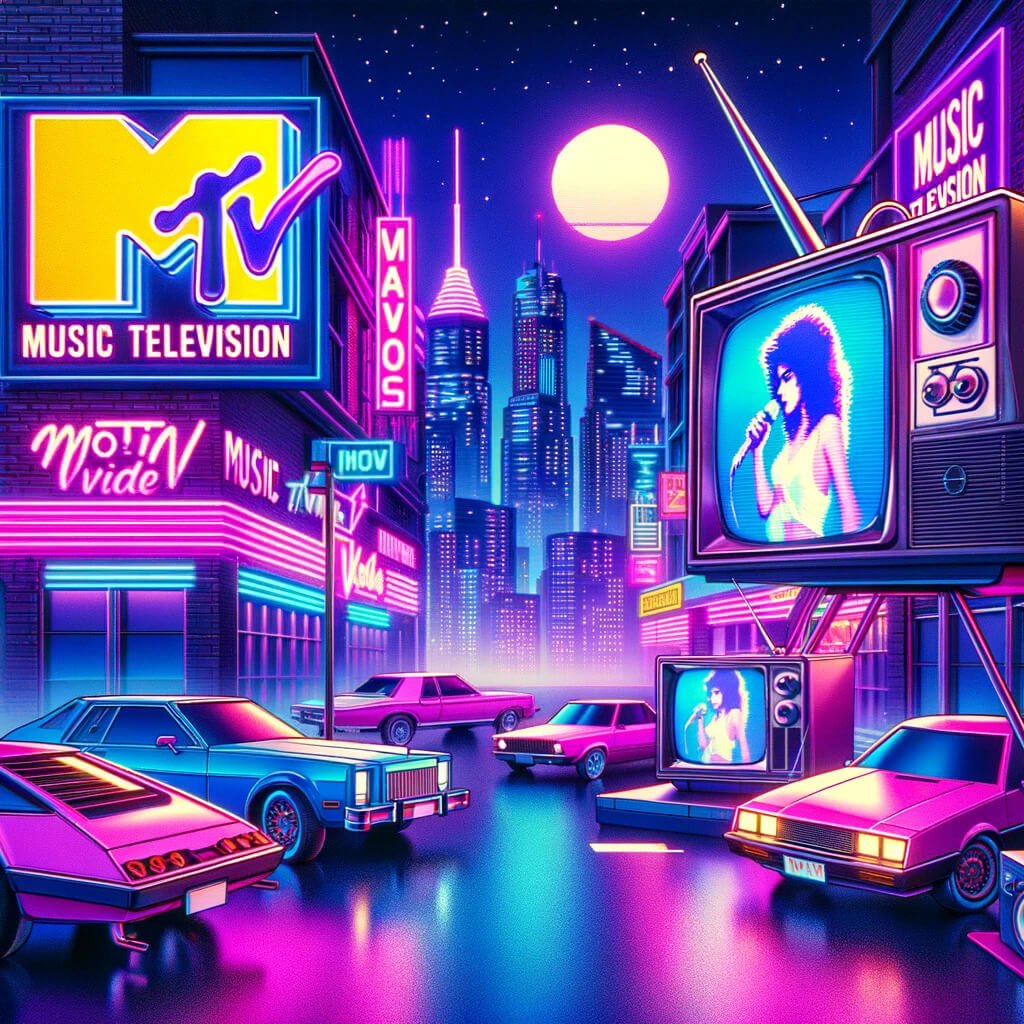
MTV’s Visual Aesthetics were characterized by a vibrant palette of neon colors, intricate graphic design elements, and innovative collage art that redefined the boundaries of Visual Culture.
The use of neon colors in MTV’s visual aesthetic added a dynamic and electric energy to its programming, making it visually captivating and appealing to a younger audience. The intricate graphic design elements employed showcased a fusion of modernity and creativity, aligning with the channel’s innovative and boundary-pushing approach to content creation.
The incorporation of collage art in MTV’s visuals brought a sense of edginess and artistic flair, creating a visual language that was distinct and attention-grabbing. These elements combined to revolutionize the way television was perceived, setting new standards for visual storytelling and artistic influence in the entertainment industry.
Neon Colors and Futuristic Imagery
MTV’s incorporation of Neon Colors and Futuristic Imagery not only reflected the technological advancements of the time but also ushered in a new era of visual aesthetics with hints of Psychedelic undertones and Y2K aesthetics.
Through this innovative visual approach, MTV created a mesmerizing palette that captivated viewers, immersing them in a world where technology and art seamlessly blended. Drawing inspiration from the digital revolution and the quirky charm of the turn of the millennium, MTV’s visuals became synonymous with cutting-edge creativity and visionary design. The use of neon colors symbolized a bold embrace of the future, while the futuristic imagery transported audiences to surreal realms, evoking a sense of wonder and excitement.
Music Videos as Mini-Movies
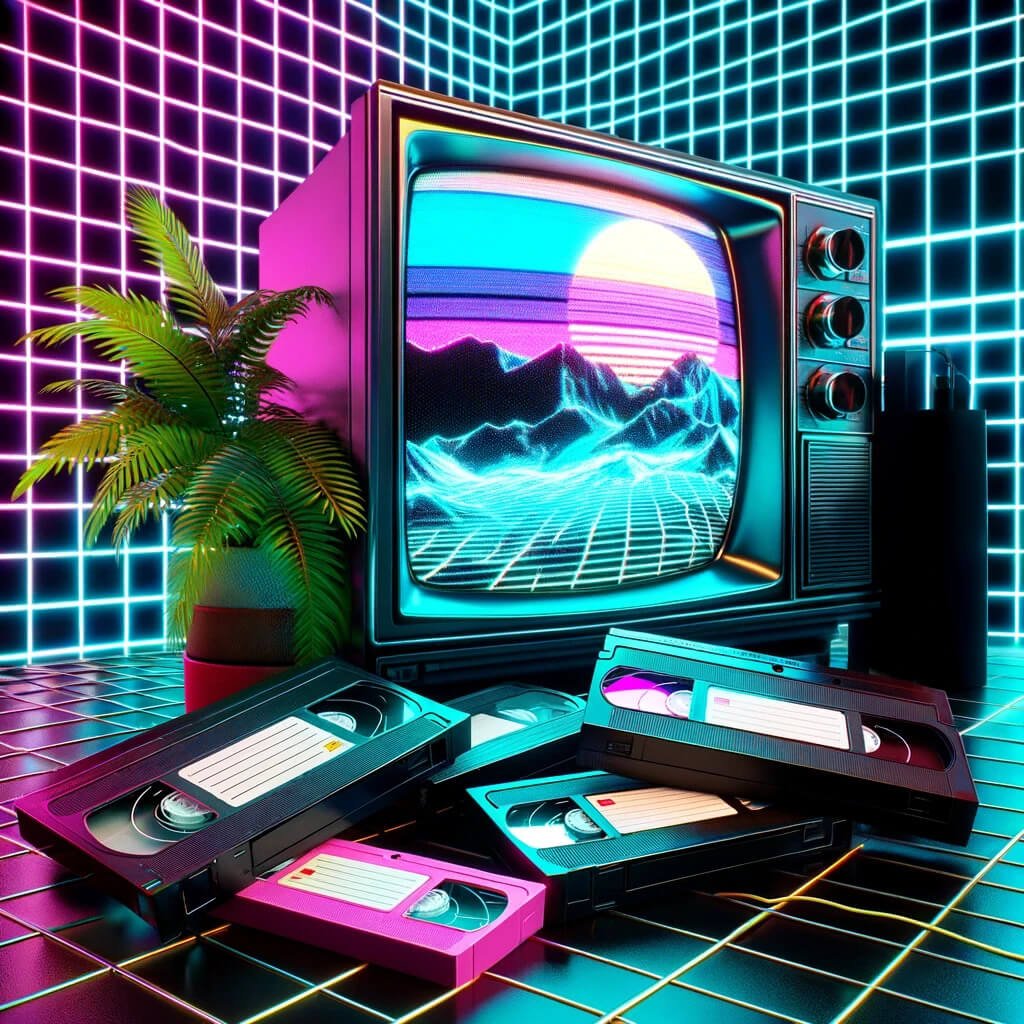
MTV transformed Music Videos into captivating mini-movies that seamlessly blended elements of fantasy and reality, reflecting the emerging trends of Cyberculture and artistic expression.
These innovative productions by MTV not only entertained audiences but also blurred the lines between the digital realm and real-life experiences, connecting viewers on a deeper level. The use of cutting-edge visual effects and storytelling techniques elevated music videos to a new form of art, captivating a global audience and shaping contemporary pop culture. MTV’s pioneering vision challenged traditional norms in the entertainment industry and paved the way for a new era of creative expression.
The Impact of MTV on Pop Culture
MTV’s impact reverberated across Pop Culture, leaving a lasting imprint marked by its embrace of Postmodernism, artistic influence, and the infusion of social commentary that birthed iconic memes and cultural references.
This influential platform acted as a catalyst for emerging artists to reach a global audience, transforming the music industry and visual arts realm. Through innovative music videos, MTV not only entertained but also challenged societal norms, sparking conversations on gender equality, race, and political issues. The channel’s diverse programming not only reflected the cultural Zeitgeist but also drove it forward, pushing boundaries in fashion, music, and popular culture. As audience tastes evolved, so did MTV, adapting to new technologies and trends, maintaining its relevance in an ever-changing media landscape.
MTV as a Cultural Phenomenon
MTV transcended its origins to become a cultural phenomenon that encapsulated the essence of Consumerism, sparked new Aesthetic Movements, and celebrated the spirit of Remix Culture through its artistic influence.
As MTV grew in popularity, it not only revolutionized the music industry but also reshaped how brands engage with their audience. The channel’s seamless integration of music and visuals set the stage for a new era of marketing through music videos. This fusion of art and commerce showcased the power of visual storytelling, influencing generations of viewers and creators alike.
MTV’s impact resonated beyond just entertainment, as its influence extended into fashion, design, and even social values. The channel’s ability to blend music, style, and culture created a vibrant tapestry of creative expression that continues to inspire diverse communities globally.
The Influence on Music and Fashion
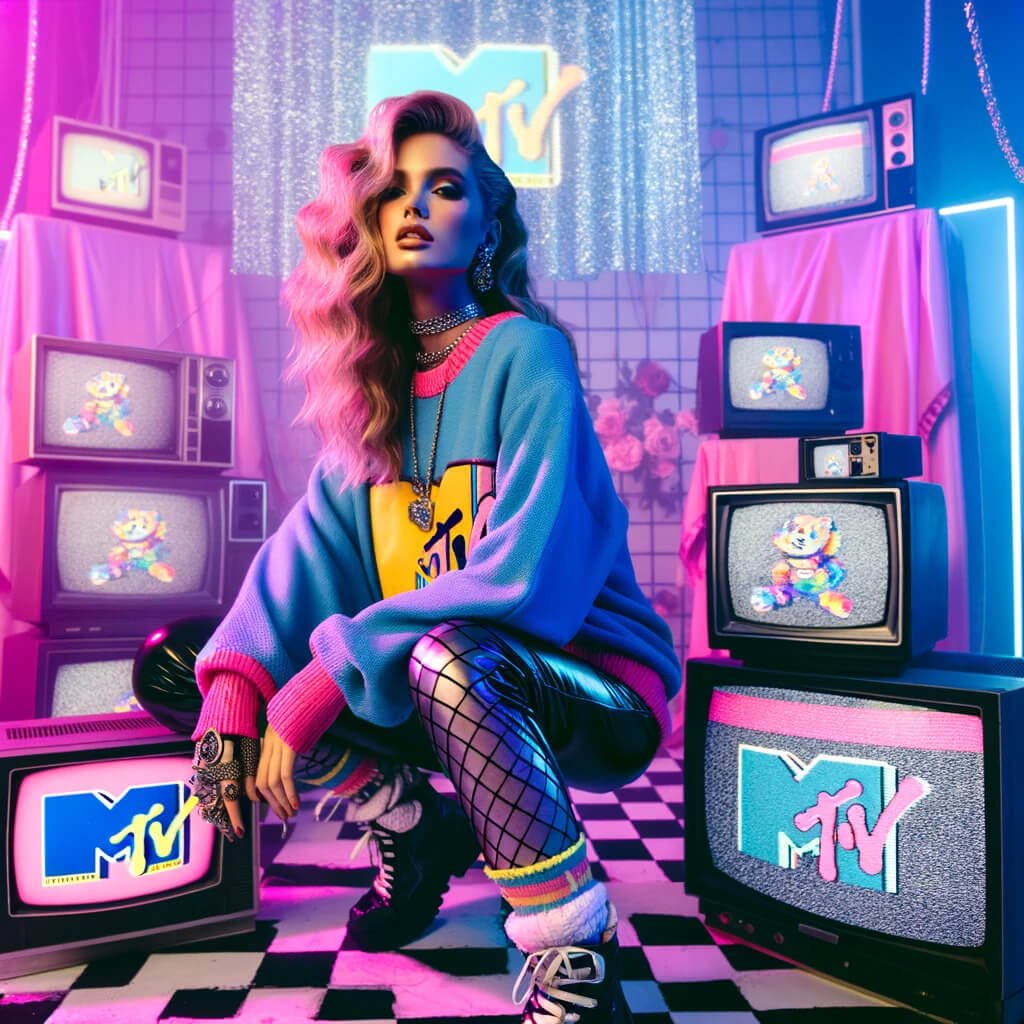
MTV’s profound influence extended beyond Music Television, shaping genres like Synth Music, defining the style choices of Generation X, and leaving an indelible mark on the realms of Fashion and Visual Culture.
MTV played a pivotal role in popularizing the electronic sound of synth music in the 1980s, with iconic music videos that integrated futuristic visuals and innovative production techniques. This fusion of music and imagery not only revolutionized the music industry but also influenced fashion trends among the youthful Generation X audience.
The rebellious fashion statements seen on MTV, from punk-inspired looks to glam rock aesthetics, became emblematic of the era. Bands and artists showcased on MTV set new standards for fashion with their bold clothing choices and unique styles, shaping the visual culture of the time.
The Emergence of Vaporwave
Vaporwave emerged as a distinct artistic movement that blended elements of Digital Art, Internet Art, and Glitch Art, embracing Y2K aesthetics and satirical undertones.
This trend originated in the early 2010s, drawing inspiration from retro aesthetics of the 1980s and 1990s, including consumerism, capitalism, and nostalgia. With the rise of internet culture, Vaporwave artists repurpose and manipulate existing music and imagery, creating a sense of irony and detachment from the original context. The genre’s visual style often features VHS aesthetics, Greek statues, and tropical landscapes, reflecting a blend of the virtual and physical worlds.
The Origins of Vaporwave
Vaporwave found its beginnings in a unique aesthetic movement that embraced sampling, electronic music influences, and a nostalgic throwback to bygone eras, reflecting the subtle yet profound impact of media influence.
The roots of Vaporwave can be traced back to the early 2010s, where artists began experimenting with slowed-down, pitch-shifted samples from 80s and 90s music. These creators sought to critique consumerism and capitalism through their music and visual art, creating a surreal and dream-like atmosphere. Vaporwave quickly became known for its distinct visual style, characterized by glitch art, Roman busts, and retro-futuristic aesthetics that evoke a sense of nostalgia for a time that never truly existed.
Vaporwave’s Visual Aesthetics
Vaporwave’s Visual Aesthetics evoke a sense of Retro nostalgia through striking Video Art that captures the essence of Cyberculture and retro-futuristic design.
With its distinctive blend of pastel colors, glitchy aesthetics, and warped imagery, Vaporwave transports viewers back to an era of VHS tapes and dial-up internet connections. The incorporation of elements from 80s and 90s consumer culture, such as corporate logos and Japanese text, reinforces the genre’s fascination with globalization and consumerism.
The use of retro computer graphics, pixelated visuals, and surreal landscapes in Vaporwave artworks creates a dreamlike atmosphere that invites contemplation on technology, nostalgia, and the passage of time. This unique fusion of art, music, and cultural references positions Vaporwave as a boundary-pushing movement that challenges traditional notions of creativity and authorship.
MTV’s Influence on Vaporwave Visuals
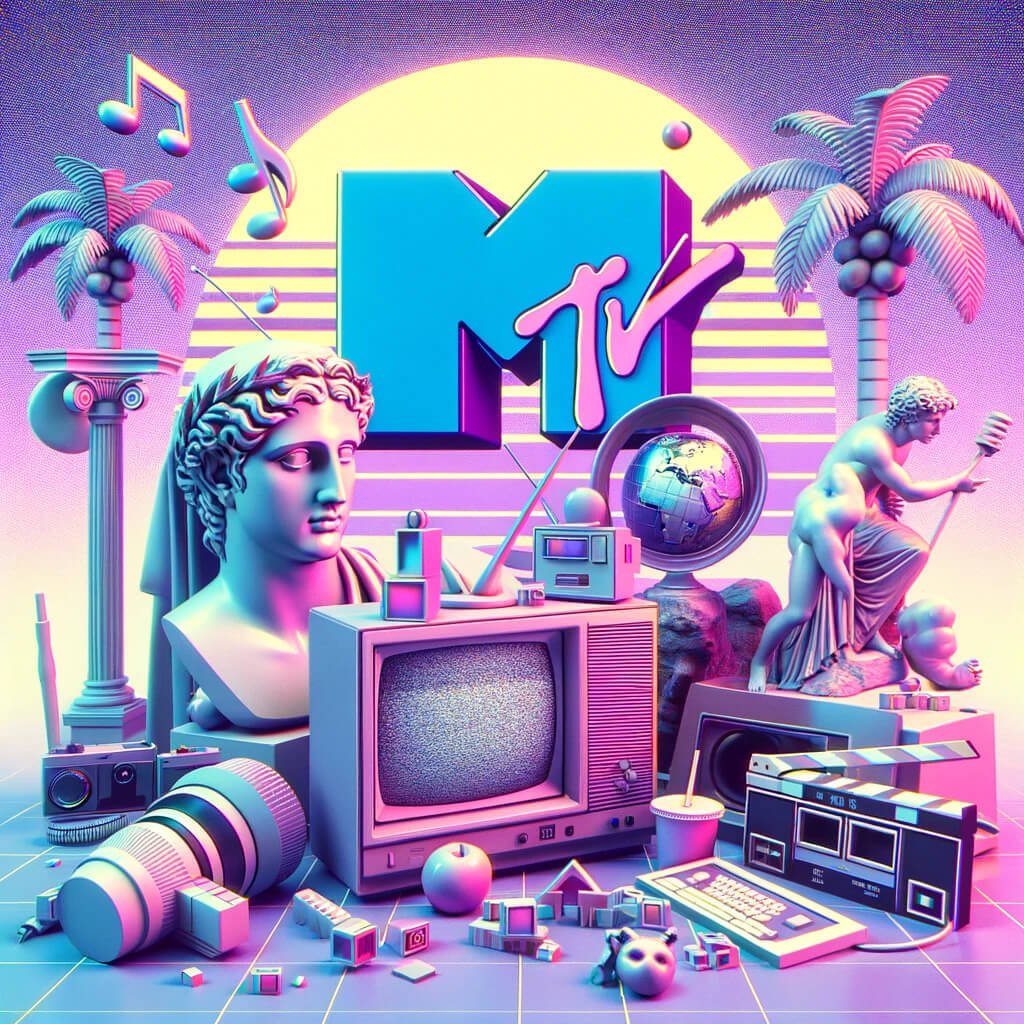
MTV’s impact on Vaporwave visuals is palpable through the infusion of Neon Colors, innovative Visual Storytelling techniques, and a deep-rooted connection to the sensibilities of Generation X that birthed Glitch Art influences.
The vibrant neon colors seen in Vaporwave visuals can be directly linked to the bold and eye-catching aesthetics popularized on MTV screens through music videos and visual promotions in the 1980s and 1990s.
This visual language not only grabbed attention but also embraced a sense of nostalgia and futurism, resonating deeply with those who grew up during the era of Generation X.
The incorporation of glitch art influences further adds a dynamic and unconventional edge to these visual designs, creating a unique fusion of past, present, and imagined futures.
Neon Colors and Nostalgic Imagery
The integration of Neon Colors and Nostalgic Imagery in MTV and Vaporwave art encapsulates a blend of cyberculture elements, whimsical fantasy, and a touch of vintage advertising charm that resonates with audiences.
The neon hues used in these artistic expressions evoke a vibrant energy, harkening back to the style of the 1980s and 1990s – an era beloved for its boldness and innovation.
The nostalgic imagery, often drawing from retro technology and pop culture icons, creates a sense of longing for a bygone time, appealing to individuals seeking refuge in an imagined past.
This distinctive aesthetic not only pays homage to a specific time period but also serves as a reflection of contemporary cyberculture, merging past and present in a visually captivating way.
Sampling and Remixing of 80s and 90s Pop Culture
Vaporwave’s essence lies in the art of Sampling and Remixing the cultural artifacts of the 80s and 90s, embodying a creative nod to Generation X sensibilities and the transformative impact of Technological Change.
By blending nostalgic sounds, visuals, and aesthetics, Vaporwave creates a fascinating juxtaposition between past and present, inviting listeners to reexamine their relationship with consumerism and mass media. This genre thrives on deconstructing commercial music through clever manipulation of familiar tunes and imagery, offering a critique on the homogenization of popular culture.
The interplay between Vaporwave’s music videos and its signature visual style evokes a sense of irony and detachment, mirroring the disillusionment felt by many in the digital age. The genre’s utilization of glitch art and retro-futuristic motifs pays homage to both the analog past and the hyper-digital present, bridging the gap between analog nostalgia and internet aesthetics.
The Use of VHS and Glitch Effects
Vaporwave’s innovative use of VHS Tapes and Glitch Effects embodies a Postmodernist approach that critiques media influence, offers a satirical edge, and showcases the beauty in imperfections.
Through the incorporation of retro aesthetics and lo-fi visuals, Vaporwave artists create a distinct fusion of past and present, challenging traditional notions of art and music. The manipulation of VHS tapes and glitch effects serves as a visual metaphor for societal disillusionment with consumer culture and technology. This subversion of mainstream media tropes not only deconstructs the dominant narrative but also invites viewers to question the authenticity and meaning behind digital representations. The juxtaposition of nostalgia and dystopia in Vaporwave’s visual language evokes a sense of unease, prompting reflection on the rapid advancements in technology and their impact on contemporary society.
The Connection Between MTV and Vaporwave Culture
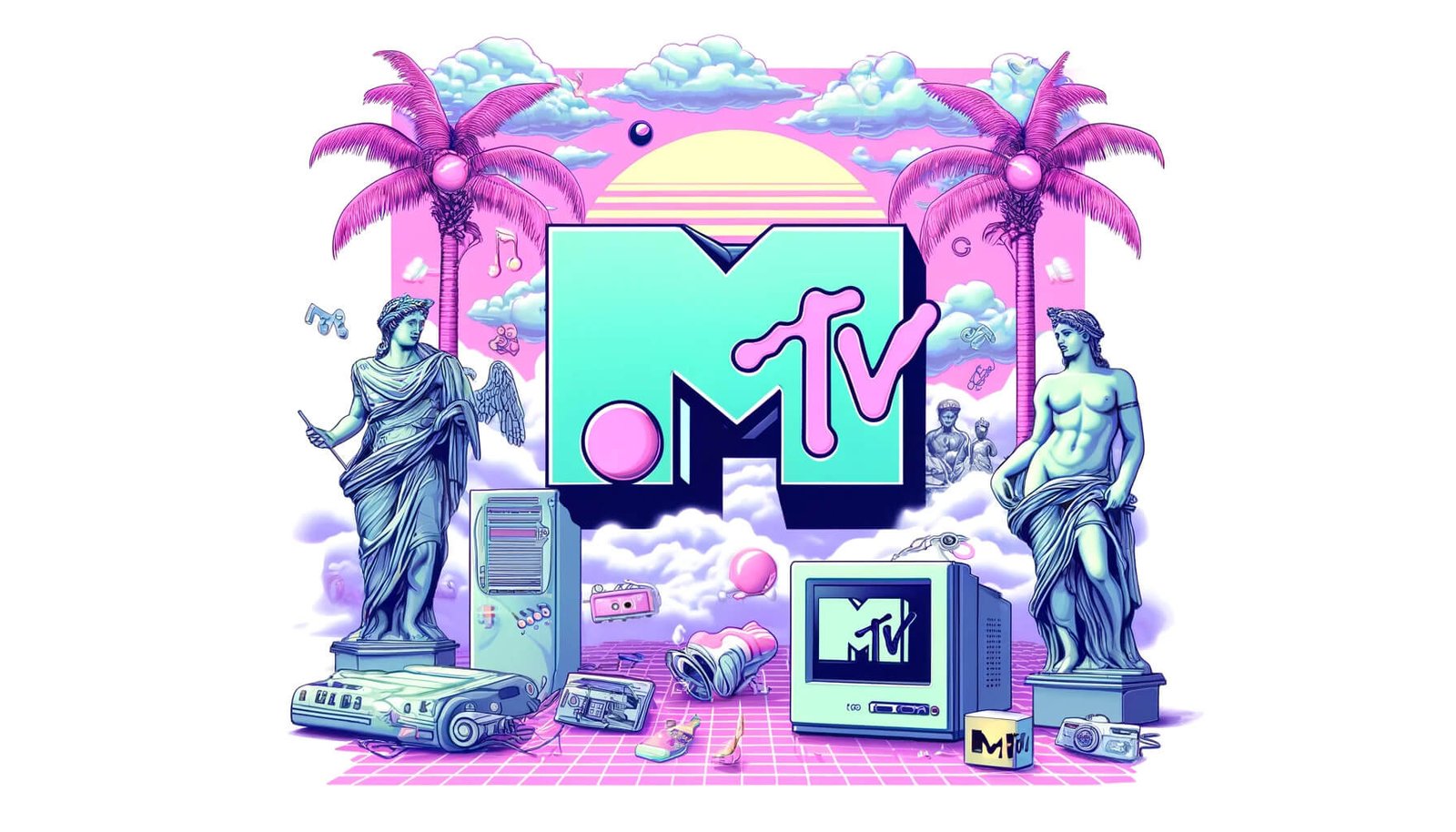
The symbiotic Connection between MTV and Vaporwave Culture transcends mere aesthetics, diving into realms of social commentary, blurring the lines between reality and fantasy, and birthing a remix culture that fosters iconic memes.
The evolution of Vaporwave Culture was deeply influenced by the visual and auditory stimuli presented by MTV, creating a landscape where nostalgic references to the past merge with futuristic concepts, providing a platform for social critique and exploration.
This fusion of reality and fantasy in both mediums allowed for a reinterpretation of cultural symbols and ideologies, giving rise to a new form of artistic expression that reflects on consumerism, technology, and the digital age.
The collaborative nature of remix culture within this symbiotic relationship enabled the rapid dissemination of ideas, propelling the creation of iconic memes that encapsulate the essence of Vaporwave aesthetics and MTV’s influence on popular culture.
The Role of Nostalgia in Both MTV and Vaporwave
Nostalgia serves as a potent binding agent in the narratives of both MTV and Vaporwave, invoking sentiments of a bygone Retro era, entwined with elements of glitch art and the ethos of aesthetic movements.
Both MTV and Vaporwave draw upon nostalgia to create a deeply resonant connection with their audiences. MTV’s embrace of 80s and 90s music videos taps into viewers’ yearning for the iconic sounds and styles of that era. Conversely, Vaporwave artistically reimagines the neon-lit landscapes of the past, blending them with elements of modern technology to craft a unique aesthetic. The prevalence of glitch art in both mediums adds a layer of disruption and reinterpretation, further fueling the allure of the retro experience.
The Critique of Consumerism and Capitalism
Both MTV and Vaporwave engage in a nuanced Critique of Consumerism and Capitalism, embodying postmodernist ideals, and fostering a remix culture that challenges conventional societal norms.
Through their visual and auditory aesthetics, MTV and Vaporwave deconstruct the hyper-capitalist landscape, questioning the relentless pursuit of material possessions and status symbols. Vaporwave particularly uses nostalgic elements to reflect on the excesses of consumer culture, juxtaposing images of luxury with decaying urban environments. In contrast, MTV influences mainstream culture by presenting a glamorous yet often shallow portrayal of consumerism, blurring the lines between art and commerce.
The postmodernist themes explored by both entities serve as a critique of the commodification of art and the pervasive influence of mass media. By subverting traditional narratives and embracing a DIY ethos, MTV and Vaporwave disrupt the established hierarchies of cultural production, inviting audiences to question the authenticity of consumerist values.
Conclusion: The Enduring Legacy of MTV and Vaporwave
The Legacy of MTV and Vaporwave endures as a testament to their profound Artistic Influence, nostalgic Throwback elements, impact on Visual Culture, and thought-provoking Social Commentary that resonates across generations.
MTV, with its bold music videos and unconventional programming in the ’80s and ’90s, revolutionized the music industry and created a visual language that artists still draw inspiration from today. Its legacy lives on in modern music visuals and cultural movements.
On the other hand, Vaporwave, a genre rooted in nostalgia for ’80s and ’90s aesthetics, challenges consumerism and nostalgia culture. Its use of glitch art and retro visuals creates a unique commentary on capitalism and the digital age, making a lasting impact on modern art and music scenes.
Frequently Asked Questions
What is Vaporwave and how does it relate to MTV?
Vaporwave is a subgenre of electronic music that emerged in the early 2010s. It is heavily influenced by 1980s and 1990s popular culture, including the aesthetics of MTV. Many Vaporwave artists incorporate elements of MTV’s visual style in their music videos and album covers.
How did MTV shape the visual style of Vaporwave?
MTV was known for its use of neon colors, glitchy graphics, and nostalgic imagery in its music videos. These elements became synonymous with the channel and were later adopted by Vaporwave artists as a way to evoke a sense of nostalgia for the 80s and 90s.
In what ways did MTV’s impact go beyond just music television?
MTV’s influence extended beyond just music television and into popular culture. The channel’s visual style and music videos set new standards for art and design, inspiring a whole generation of artists and shaping the aesthetic of future genres like Vaporwave.
Why is nostalgia such a prevalent theme in Vaporwave?
Nostalgia is a central theme in Vaporwave because the genre is heavily influenced by the music and visuals of the 80s and 90s. MTV’s impact on popular culture during this time period is undeniable, making it a major source of nostalgia for many Vaporwave artists and fans.
How does Vaporwave use MTV’s visuals in a different way?
Vaporwave takes elements of MTV’s visuals and recontextualizes them, often using glitchy and distorted effects to create a surreal and dystopian atmosphere. This subversion of the original visual style of MTV adds a unique and modern twist to the nostalgia it evokes.
Can you see the influence of MTV’s visuals in other genres besides Vaporwave?
Yes, the influence of MTV’s visuals can be seen in other genres such as synthwave and retrowave, which also draw inspiration from 80s and 90s aesthetics. However, Vaporwave’s use of these visuals is arguably the most direct and intentional, making it a prime example of how MTV shaped visual styles in music.
